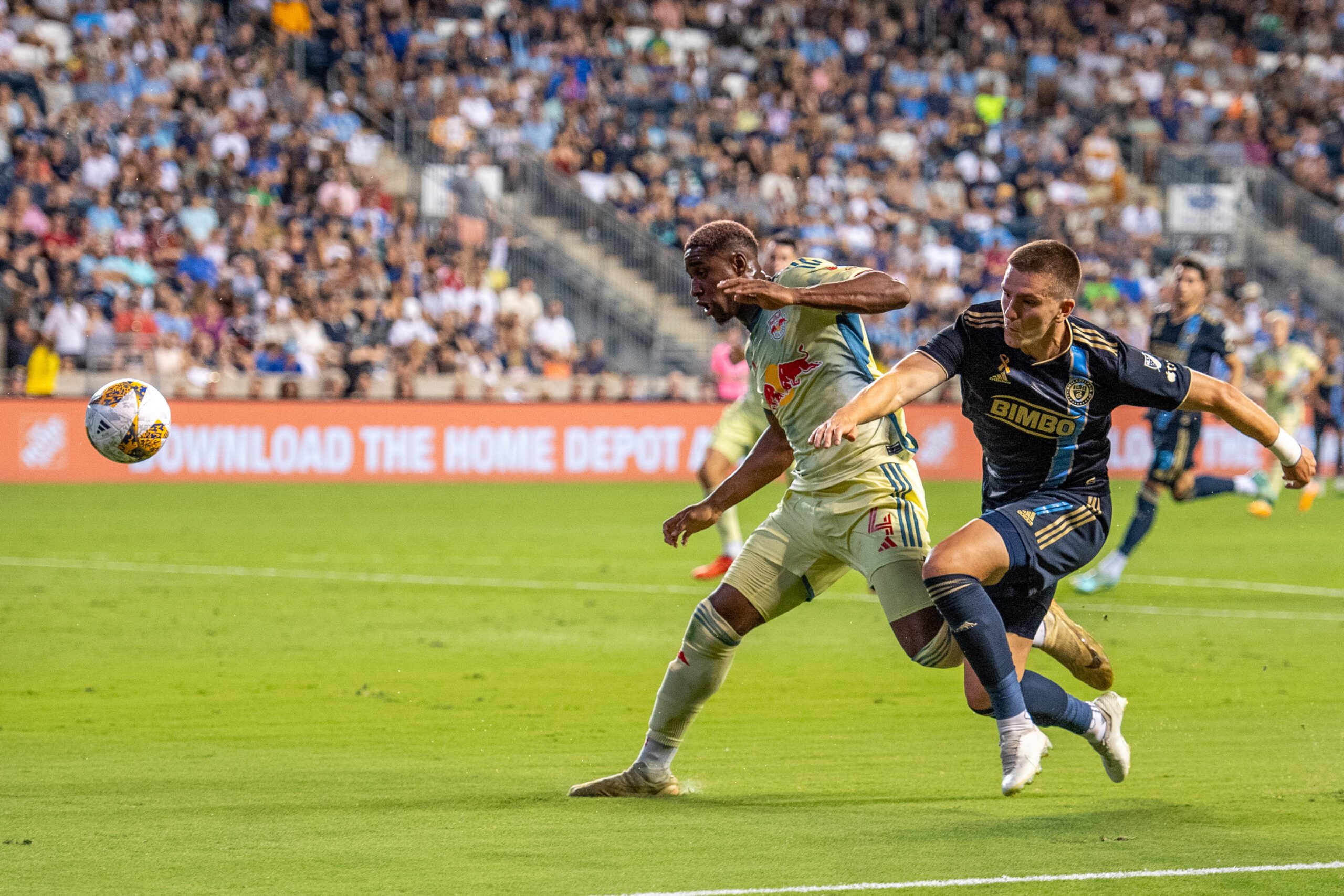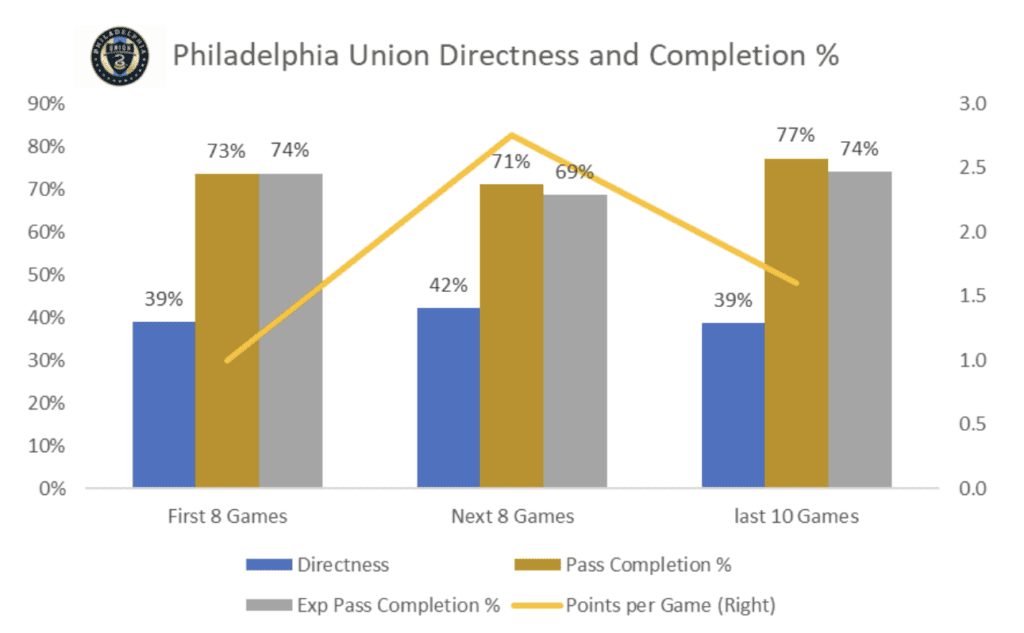Brotherly Game
Let’s Get Direct: The key to the Philadelphia Union’s remaining season

In almost every league outside of MLS, the idea of playing direct soccer is viewed as a tactic of the weak. If you don’t have the talent to maintain possession against your opponent, it’s best to just send the ball up Route 1 and try to catch the other team while their defense is not set. Another benefit of this counter attacking mindset is that your defense doesn’t necessarily have to pull itself apart holding the ball, and the team can remain more structured. It’s smart if you know you’re not as good as your opponent.
This notion is contrary to current trends in Major League Soccer where a direct style of play has been turned into a tactician hipster’s dream. Most MLS don’t play the standard bunker-and-counter-let’s-get-a-0-0-draw style. This direct style is defined by a relentless pursuit of the goal as quickly as possible, pressing high up the pitch and out-hustling the other team back into defensive shape. You might call it a poor man’s Man City. It’s demanding. It’s actually not for the weak at all.
The New York Red Bulls have been at this for a half decade or more, and the Philadelphia Union have been embracing this style for the last few seasons. Data shows that the more direct the Union are, the better they play. It’s the key to how the story of this season will unfold.
The Union are currently the 5th most direct team in MLS. We can measure directness simply by looking at the direction and distance of passes attempted. For this measure, we take the distance covered toward the opponent’s goal divided by the overall distance of the passes. A directness of 40% would mean that for every 10 yards a team passes the ball, they progress the ball on average 4 yards toward the opponent goal.
The surprising St. Louis City SC is the most direct team in the league, with a directness percentage of 45%. The least direct team is Sporting Kansas City at 32%. The Red Bulls sit in third place. DC United and Minnesota round out the top 5. It’s worth noting that all but one of those teams would make the playoffs if they started today, and St. Louis and Philadelphia are top 5 in the league in points. It certainly seems a viable approach.
The Union’s directness measure is 40%, and as we’ll see that appears to be a magic number for them. But simply launching passes up the pitch isn’t the final goal, you’ve got to be good at completing them. Here’s a look at the Union’s directness by game plotted against their pass completion percentage – with the points earned in that match as the data point.

The line on the chart above represents the MLS average completion rate given a level of directness over the past 3 seasons. We can clearly see a relationship here for the Union. When their pass completion is above average relative to their directness, they are averaging 2.2 points per contest (16 games total). When below the league average, they average just 1.1 points (10 games total).
What’s harder to see from the chart is that regardless of pass completion percentage, the Union are simply better the more direct they play. When their directness level is below 40% they average 1.43 points per game. When it’s between 40% and 43% they average 1.57 points per game. And the five times they’ve been above 43% they have a perfect record with 3.0 points per game.
You might be wondering, what in blazes is that bizarre 3 points way in the upper left of the chart. That would be that very-hard-to-watch Red Bulls battle in Jersey. Remember the other team that plays this way? Yeah, two direct teams going at it can result in extremely direct games. The Union actually completed a fair number of passes given their style that game, but it certainly didn’t look that way.
The Union are better offensively and defensively when they play direct. This chart below shows it very clearly. The Union are pedestrian when their directness level is below 40%, and a completely different show when above 40%.

Lastly, let’s take a look at the arc of the Union season so far. You may recall that the Union struggled out of the gate and sat on 8 points through their first 8 games. The Union’s directness during that run was 39%. Their pass completion rate of 73% was also below a 74% league average for that level of directness. The directness wasn’t terribly low but they weren’t completing enough passes. In the four games they won or drew in that set of games their directness was 40%. In those they lost it was 37%.
The next 8 games the Union went on a tear, winning seven and drawing one. Not surprisingly, their directness was 42% during that stretch. Despite their pass completion rate dropping to 71%, that was now better than the league average of 69%.
Looking at the last 10 games requires more nuance. Their form is solid but unspectacular. They’ve averaged 1.6 points per game in this stretch and also had a directness level of 39%. That’s the same level they had earlier in the season, but they are now completing a much higher percentage of their passes. Here’s a chart that lays it all out.

The Union have completed 77% of their passes in the last 10 games, well above average. But it certainly appears they play best when they are passing more directly than they have been recently.
The Union have developed a unique and compelling brand of direct soccer. The more their passes are directed toward the opponent’s goal, the better they perform. As they finish this season with a difficult stretch of games, and head into the playoffs, they need to impose their style of play even more than they have. How they pass the ball is the key to the rest of their season.


















